Anatomy of a Rig – Alex Mungal Motionless in White Tour
Posted on April 2, 2024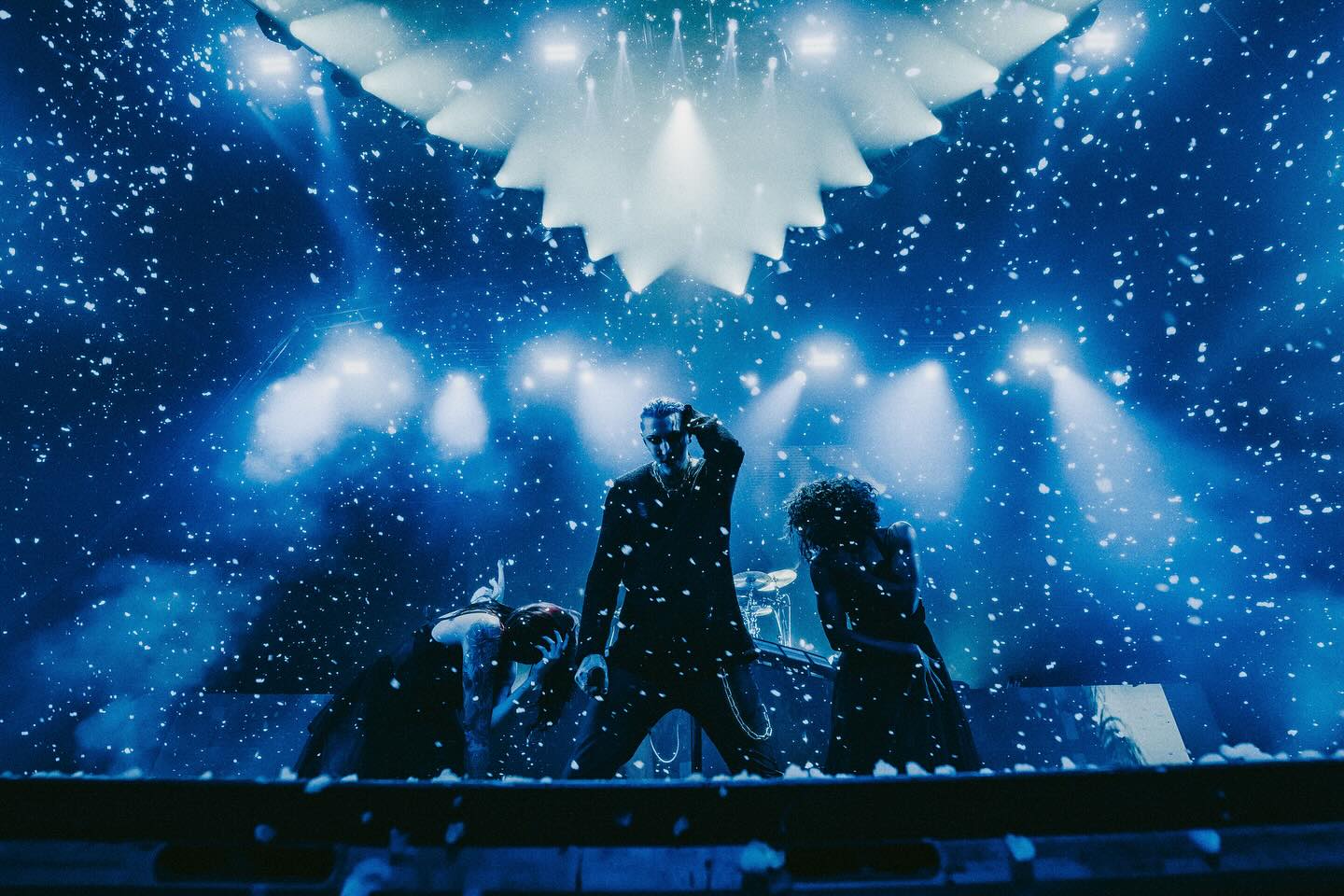
Fans might have been well advised to wear seatbelts when they packed venues for Motionless in White’s “Touring The End of the World Tour.” Aptly described by one admiring critic as a “torrent of explosive metalcore,” the band’s performance on this 33-city tour, took fans on a wild ride of searingly intense music, dancing, pyro effects, and a potent lighting design by Alex Mungal.
Of course, fans weren’t strapped to their seats or even seated at all during this tour’s shows as they stood, cheered and danced. Connecting them to this immersive experience was Mungal’s design, which, like some gravitational force, pulled eyeballs into the stage.
Mungal accomplished this with a distinctive design that had no front lighting. Instead, he hit the band with multiple light angles from a double winged overhead truss configuration, that created an out-of-this-world aura that perfect fit the moment.Taking time from his touring schedule, Mungal spoke to us about his vision for this design.
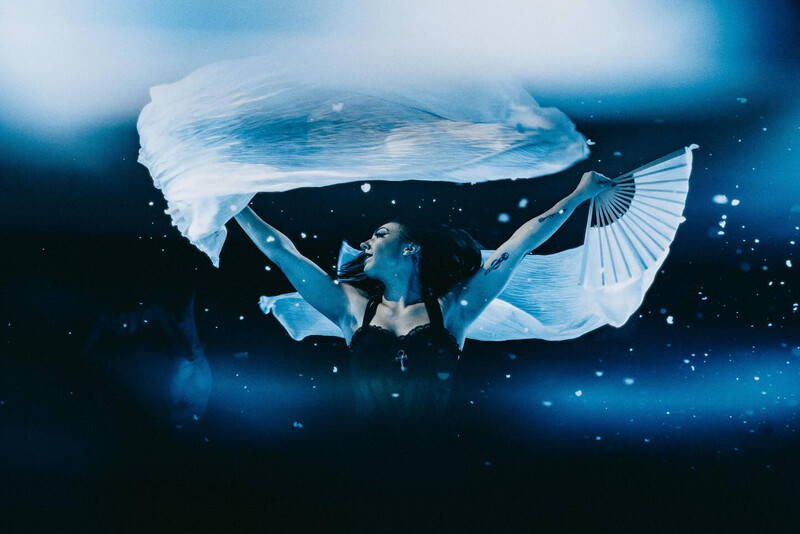
The winged design in this tour was stunning, but it didn’t allow room for any front lighting. Was this a concern?
“Not a concern at all. It was an intentional challenge to try to keep things open and clean! I personally prefer side lighting to front light as it provides more depth and less hotspots.With some of the pale makeup this artist wears, we want to accent the facial features without completely washing everything out.”
Even though you didn’t have any front lighting positions, you did get excellent coverage of the band members. How did you do this?
“With Motionless in White being a theatrical spooky band, we heavily rely on uplight and side light to cover the band members and dancers.”
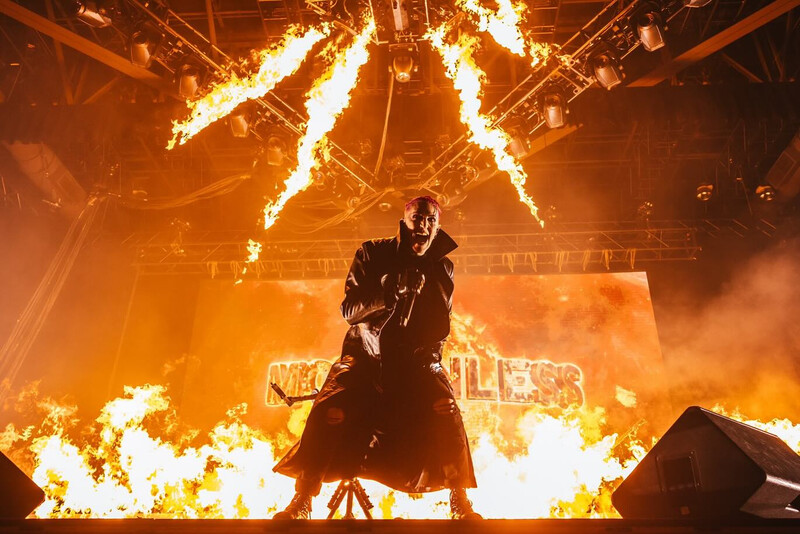
“What was the biggest challenge designing without front light?
“Fine tuning some wash positions during the show on some stages presented a challenge, but it wasn’t anything we couldn’t overcome. It helps that we offset front light with heavy use of uplight and side light. Additionally, we have a follow-spot above the artist at center to follow him to the corners and provide hair light when he’s elsewhere.”
You also had a very long upstage riser that had dancers on it. What challenges did this present?
“Not much, it was actually a really nice spot to have our pyro safe zones and still have lots of action. The extremely talented Cherry Bomb dancers could be all over that stage performing with the band and have plenty of room, height, and depth to still be safe as pyro fired.”
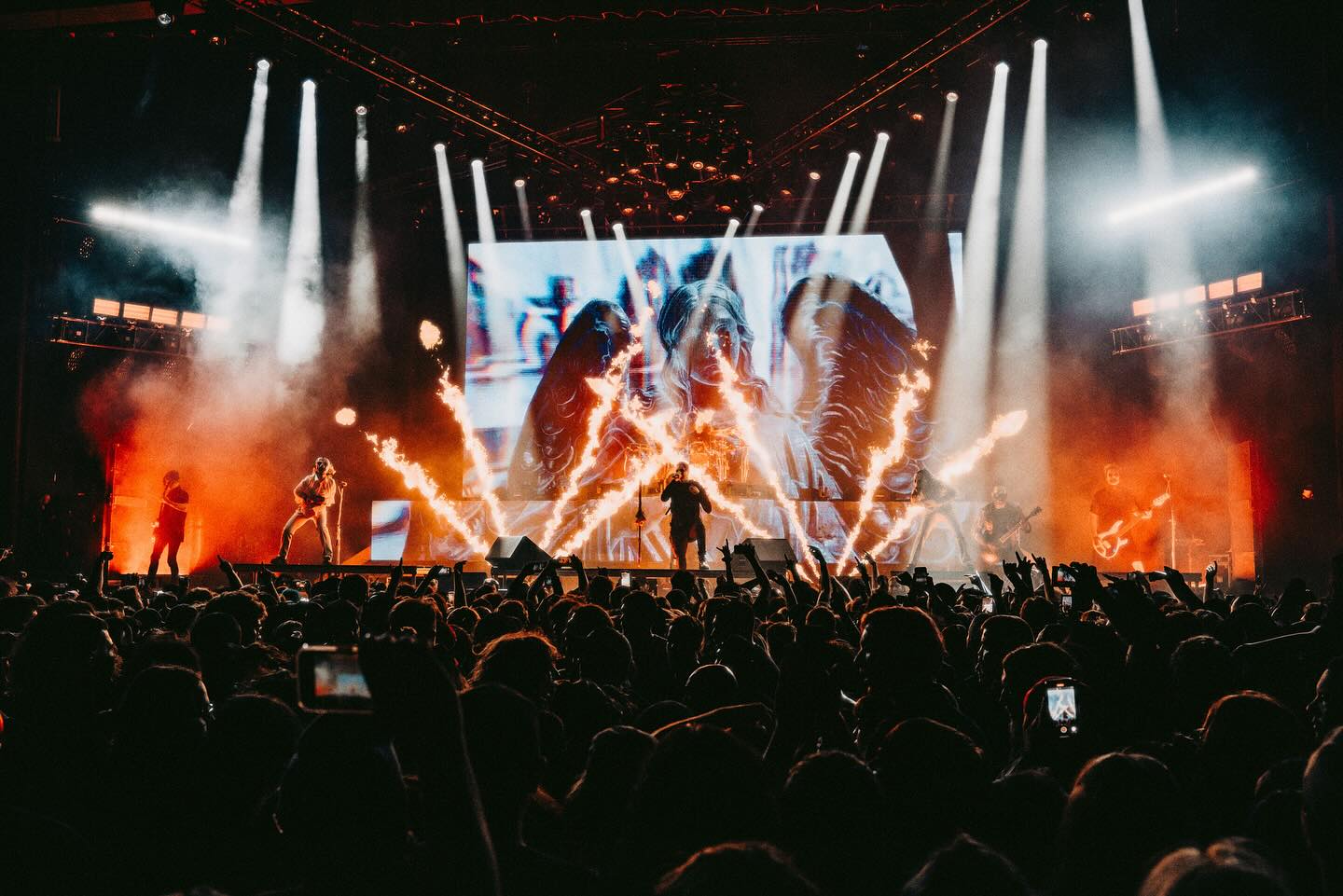
Pyro seemed to play a big role in your design. Where did you positioned these units and why you positioned them the way you did?
“We had several different pyro instruments in this show, and of course an army of CO2 cannon jets. We had a wall of fire screens just south of the upstage riser, to create low burn bar effects, as well as impactful fireballs and occasionally a wall of fire chases. Additionally, we had five master units behind those to give us those long fingers of fire, as well as an inverted unit above center stage firing downwards, which was very cool in contrast to the up shots all over the stage already. This gave us sparks in an assortment of locations, and cryo firing from both overhead and upstage.”
Your design left quite a bit of space in the middle of the stage. How did you avoid having it feel empty.
“We had many, many focus positions to achieve different looks. We got our wash and fill light from the washes/strobes, and pinpointed specials.”
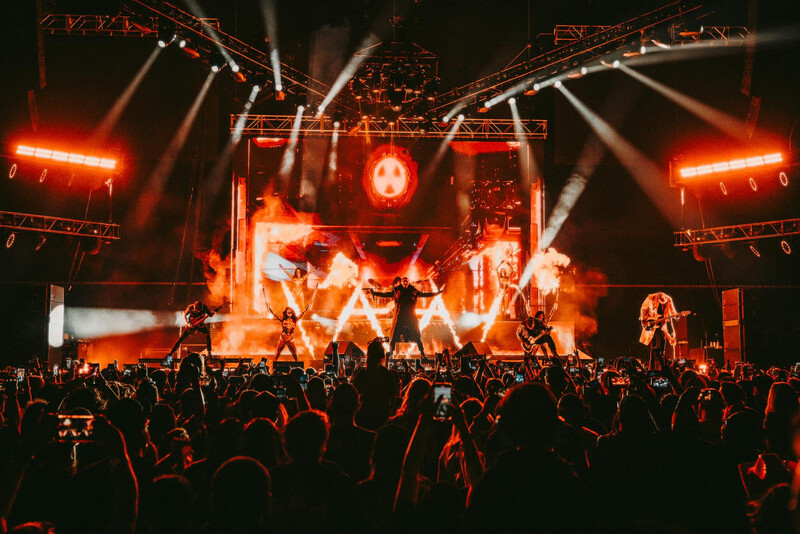
As a designer, what were the key lessons you learned from this project?
“You learn something from every show you do, or you’ll never grow as an artist or designer. The challenge of having no FOH key light was a great challenge to push through and tune our skills with successfully lighting an artist from the side and uplights. Using other tools in the arsenal while bringing out massive stunning looks.”